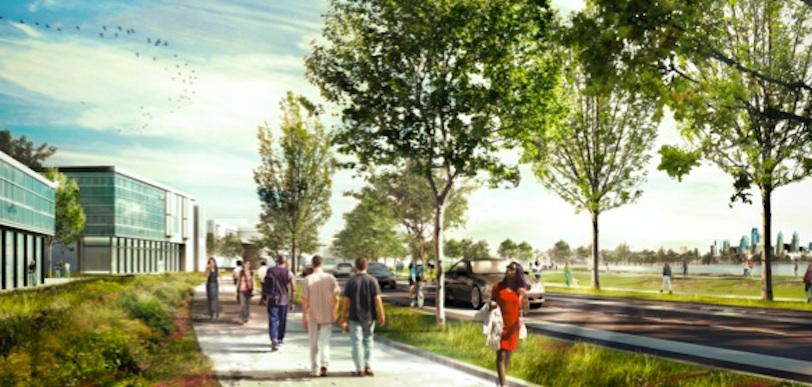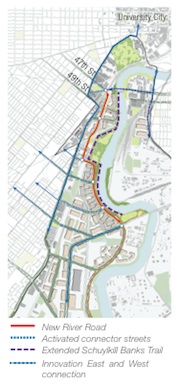As part of the Lower Schuylkill Master Plan (LSMP), a long-term revitalization blueprint released last year, the Philadelphia Industrial Development Corportation (PIDC) has announced an RFP for a feasibility study of a proposed river road in the district. According to PIDC Senior Real Estate Manager Kate McNamara, “It's not your typical PennDot project.”
The bottom line, she explains, is that both the city and PIDC are united in their understanding that the Lower Schuylkill, once a hotbed of heavy manufacturing and innovation, is today “a place that [is] really in need of some serious redevelopment attention.” In fact, when the final version of the LSMP was published, it recommended splitting the Lower Schuylkill into three separate “campuses” in an effort to drive the next generation of growth.
The 512-acre campus adjacent to University City — known as the Innovation District — is where the majority of the LSMP's early projects will be taking place. According to the RFP, roadways on the west bank of the District, roughly between Grays Ferry Avenue to the north and Passyunk Avenue to the south, are “indirect, circuitous, and non-intuitive.” And because so many of the businesses that once operated in the area were largely served by the river, quality road infrastructure is lacking.
A budget of $200,000 has been set aside to see if the north-south connector road proposed in the Master Plan is feasible, and to explore possible alternatives.
“You really need another north-south arterial to bring businesses in, and just to bring regular citizens down to the river,” says McNamara. “That's where the new extension of the Schuylkill Banks Trail is going to be.”
The resulting study should be complete within six to nine months. And after that? Another study, of course, but with much more detail and a steeper price tag. Fortunately, the upside is tremendous. West Philly is home to a number of companies that are getting too big for University City — they could become new residents of the Innovation District.
“They don't have the space they need, and so a lot of [them] go to the suburbs,” says McNamara. “And we would prefer to keep them.”


